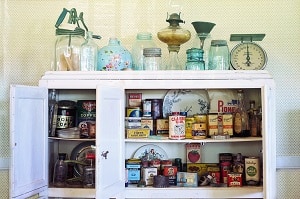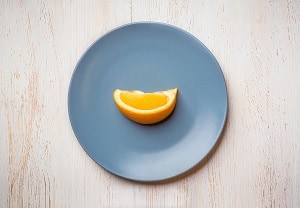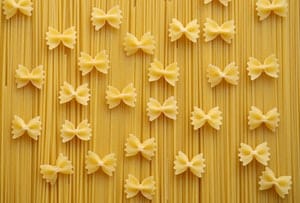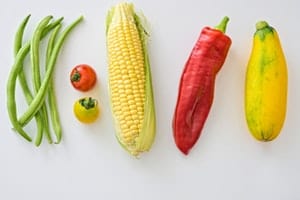Environmental issues are becoming more and more important these days. In 2018, we turned our attention towards single-use plastic and the impact it has on our oceans. The palm oil industry also came under scrutiny for its deforestation of rainforest and putting at risk the survival of orangutans. In 2019, why don’t we look at how to reduce food waste using a weekly shopping list calculator?

Top Rated Shopping List App
Share And Synchronize An Unlimited
Number Of Lists With Others Instantly
Contents
 Why Should We Avoid Food Waste?
Why Should We Avoid Food Waste?
As much as reducing your own food waste is very important, it must be noted that households are not solely responsible for food waste. A lot of it is created by the growers. Some is also wasted by supermarkets, who discard produce that doesn’t “look right”, or hurriedly bin products that are still safe to eat but are close to their “use by” or “sell by” date.
But in developed countries, a major amount of food waste is created in the home. In these countries, households can contribute up to 30% of food waste.
The most obvious reason we should avoid wastage of food is that a lot of it ends up in landfills. It makes up 12.5% of what goes into the waste system, even when some of it (around 2%) does end up getting composted or recycled. The problem is that whilst this seems like a small part of waste, food waste makes up for 34% of methane emissions: a gas that is 20 times more potent than carbon dioxide in its contribution to climate change.
Whilst there are many wider negatives to food waste, you can reap some great personal benefits. Firstly, you can save money. The average American household can throw away up to $2,200 a year in wasted food per year. This can buy you a comfortable vacation for your family.
Next, if you include good meal planning as part of your food waste solutions, it can help control or even lose weight. This is because one way to help reduce food waste is to control your portion sizes. By scaling back your portions to recommended sizes, and shopping accordingly, you can tackle both overeating and reducing the amount of food you throw out at the same time.
So what are we waiting for? Let’s work out how you can build your weekly shopping list. Alternatively, you can skip straight to our free printable weekly shopping list template and calculator should you wish.
 Dos and Don’ts
Dos and Don’ts
Do
Plan meals – if you plan your meals in advance you can calculate exactly what you need to buy. This will also save you time as you can then get everything you need in a single shop (if possible) rather than popping in and out of stores during the week.
Use a shopping list – by using a grocery list you’re more likely to stick to what you need when at the grocery store and not be tempted to succumb to impulse buys or supermarkets sneaky psychological tricks. If you’re trying to throw away less food, the last things you want to be doing is buying extra items that you don’t need. You risk wasting these additional bits and bobs or let these derail your original plan and creating food waste there instead.

Top Rated Shopping List App
Share And Synchronize An Unlimited
Number Of Lists With Others Instantly
Buy some kitchen scales and a measuring jug – most people don’t use weighing scales when preparing food. You probably don’t weigh out 1oz/30g of cereal for breakfast, which means it’s highly likely that you’re actually serving up something closer to 60g: that’s double the recommended serving! If you don’t already own some kitchen scales, investing in some will really help you make sure you’re keeping to the correct portion sizes. Likewise, a measuring jug will help you do the same with liquid.
Have some backup food – this is quite important for the first few weeks as you adjust to your new regime. You might find you’ve not calculated items properly, or find it difficult to stick to smaller, recommended portions sizes. You can use our Basic Grocery List template to enable you to prepare basic meals at a moment’s notice.
 Find out how to store items properly – most people will just bung all dry goods into the pantry and everything else in the refrigerator or freezer. But sometimes this isn’t the best way to store things. By using the guides in our “How to Store” section, you can find out how to optimally store items and ensure they don’t go bad too quickly. You might even be able to extend the life of them for even longer than you’d expect. Longer lasting food means less unexpected waste.
Find out how to store items properly – most people will just bung all dry goods into the pantry and everything else in the refrigerator or freezer. But sometimes this isn’t the best way to store things. By using the guides in our “How to Store” section, you can find out how to optimally store items and ensure they don’t go bad too quickly. You might even be able to extend the life of them for even longer than you’d expect. Longer lasting food means less unexpected waste.
Keep an inventory – this is because it’s likely you’re going to have spare quantities of ingredients. Food often comes packaged in quantity or weight that doesn’t divide easily into the number of portions you need. If this does happen, make a note of the amount left over, and be sure to subtract this from your shopping list for the following week.
Learn the difference between “Sell by”, “Use by”, and “Best Before” – by learning these distinctions you can make better decisions on whether something needs to be thrown out or not, and avoid throwing out good food too early.
“Sell by” is used by supermarkets to indicate when food should be sold before in order to maximize the freshness of the produce in the buyer’s home.
“Best before” tells you when for how long the product will taste best for. Many products are still perfectly safe to eat after their “best before” date. They just might not be as tasty as eating them before that date.
“Use by” is the date which indicates when a product is most likely going to expire and become bad. However, these can be quite generous, meaning sometimes a product can still be perfectly fresh and safe to use not long after this date. It’s a good idea to learn how to better determine whether something has gone bad or not, and use or throw out accordingly. However, if you’re unsure, it is best to err on the side of caution to avoid food poisoning.
 Don’t
Don’t
Be tempted to buy food in bulk – buying in bulk is very tempting as the price per unit or weight is usually significantly cheaper. However, unless you’re absolutely certain you’re going to use all of it, buying in bulk can turn out to be a more expensive way of shopping and will end up creating more food waste.
For example, imagine you use only 4 onions a week. You could buy a bag of 10 onions for $5 ($0.50 per onion), instead of 4 individual onions for a total of $4 ($1.00 per onion). However, if you only use the 4 onions and throw away 6, you actually have ended up paying $2.50 an onion: that’s more than double the price of buying them individually. Plus, you’ve just created a load of food waste.
 What are the recommended food portions?
What are the recommended food portions?
It is recommended that a person eat no more than the following recommended portions per day:
| Food type | Portions per day | Portions per week |
|---|---|---|
| Protein | 3 | 21 |
| Dairy | 3 | 21 |
| Carbohydrates | 11 | 77 |
| Produce | Minimum of 5 | Minimum of 35 |
| Oil and fat | Use as little as possible | Use as little as possible |
Be aware that these are only guidelines. Depending on how active you are, you may want to increase the number or size of portions you have.
For this, we’ll be using recommended portion sizes for adults only, as defined by various dieticians and government agencies. Children under the age of 12 need smaller portions, which can be up to 60% of adult sizes, especially for toddlers and babies.
 Protein
Protein
Meat
1 portion = 60-90g/3-4oz
This is about the size of a deck of cards. Using this portion size a 300g pack of chicken breasts (which is about 2 whole breasts) should provide 3-4 portions, and a 500g of ground beef should provide 5-6 portions.
Fish
1 portion = 140g
It is recommended that we eat at least two portions of fish a week, one of which should be oily fish such as salmon, mackerel, or sardines. 1 pack of 2 salmon fillets should provide 2 portions, whilst a 160g can of tuna should provide 1-2 portions.
Eggs
1 portion = 2 medium eggs
A half dozen (6) eggs contain 3 portions.
Plant protein (legumes etc)
1 portion = 150g
A 220g (drained weight) can of beans should provide up to 2 portions.
 Carbohydrates
Carbohydrates
Pasta and grains
1 portion = 75g
A 500g bag of pasta or rice should provide 6-7 portions.
Bread
1 portion – 1 medium slice
This means that 1 sandwich actually contains 2 portions of carbohydrates.
Cereal
1 portion = 30g
A 750g box should provide 25 portions.
 Dairy
Dairy
Milk
1 portion = 250 ml
1 liter of milk should provide 5 portions. However, the recommended amount you should put on your cereal is 125ml. This means 1 liter of milk should provide 8 breakfast portions.
Yogurt
1 portion = 125ml
A 500ml tub of yogurt should provide 4 servings.
Cheese (hard)
1 portion = 30g
A 350g block of hard cheese contains 11-12 portions. A portion is also approximately 1 slice of sliced cheese.
 Produce
Produce
Fruit & Veg
1 portion = 80g
80g is equivalent to 1 carrot, 1 apple, 1 pear, 10-12 grapes, or ½ bell pepper. It’s also around 3 heaped tablespoons of peas or sweetcorn.
Dried fruit
1 portion = 30g
This is the equivalent of 1 heaped tablespoon.
Weekly Shopping List Template and Calculator
As everyone’s shopping is different, and as families create their own unique meal plans, it’s not possible to come up with a definite weekly shopping list. However, what we can do is provide you with information about how to better figure out what you need, and the means to work out the amount you need to put on your shopping list.
This free printable template will also help you calculate how many portions of each food group you require and help you keep to your portion goals when shopping for your weekly meals. You can even use it as a basis to help build your own.
What other tips do you have to help you control portion size? Do you think the recommended portion sizes are too small, or even too big? Are you surprised about how many portions you can get out of a pack of ground beef? Let us know in the comments.

